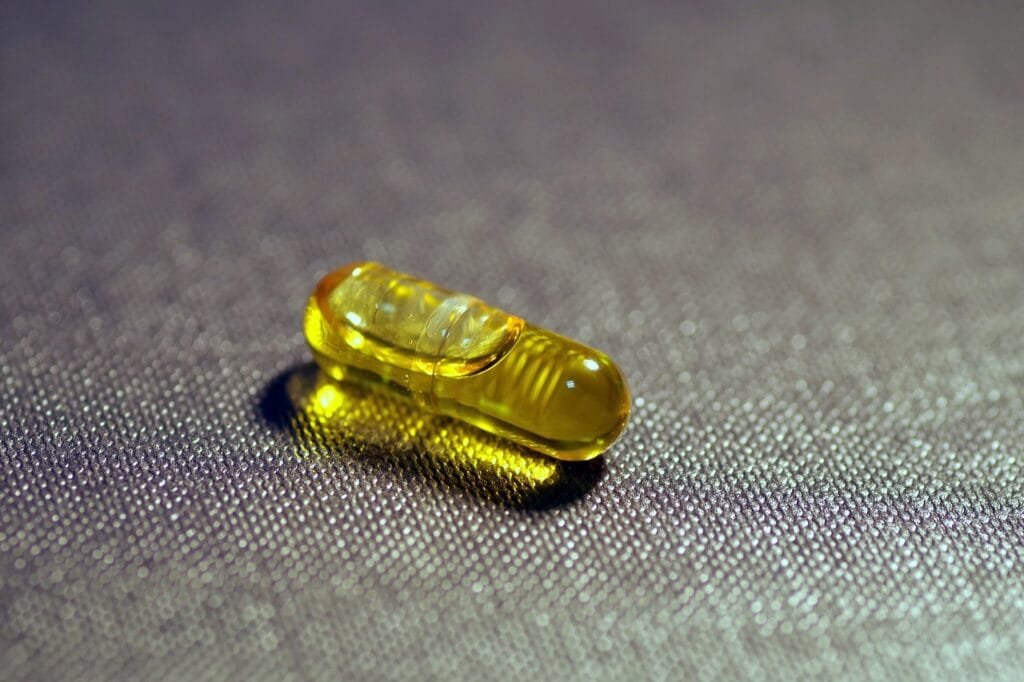Top 10 Collagen Rich Foods to Boost Skin Elasticity and Joint Health
Picture this: Your skin, once plump and supple, starts to feel like it’s whispering secrets of time. Your knees protest after a flight of stairs, and that jar of pickles suddenly feels like a nemesis. What’s going on? Meet collagen—the unsung hero quietly holding your body together like nature’s own glue. This miraculous protein isn’t just the secret sauce for dewy skin; it’s the cushion for your joints, the spring in your step, and the silent guardian of your bones.
But here’s the catch: As birthdays stack up, your body’s collagen factory slows its roll. The result? Creases that linger longer, creaky mornings, and a flexibility score that’s… well, let’s call it “nostalgic.” The good news? You’re not at the mercy of time. Mother Nature (and your kitchen) hold delicious keys to turning the tide.
From grandma’s chicken soup to a few unexpected bites that’ll make you grin, we’re diving into a world of collagen rich foods that do more than nourish—they help you reclaim that vibrant, “I’ve-still-got-it” energy. Ready to feast your way to a bouncier, brighter you? Let’s explore the pantry of possibilities—no lab coat required. We are delving into these natural collagen sources for you to boost collagen naturally.

1. Bone Broth: A Collagen Powerhouse
Bone broth is an excellent source of collagen, vital for maintaining supple skin, healthy joints, and shiny hair. It also plays a key role in supporting energy levels and aiding the body’s healing processes.
How It’s Made:
Bone broth involves simmering animal bones (preferably from organic sources) in water for up to 24 hours. This slow-cooking process breaks down the collagen into amino acids, making it more bioavailable (easier for the body to absorb).
Easy Ways to Incorporate Bone Broth:
- Sip it straight: Heat up a cup and enjoy as a nourishing beverage.
- Cooking base: Use bone broth as the foundation for soups, stews, and sauces.
- Marinades: Marinate meats or fish for extra flavor and nutrient content.
- Boost grains: Replace water with bone broth when cooking rice or pasta for an instant collagen infusion.
- Ice cubes: Freeze leftover broth in ice cube trays for convenient use in various dishes.
2. Spirulina: More Than Just an Algae
Spirulina—a type of blue-green algae—is a surprising collagen contender. Studies in the Journal of Agriculture and Food Chemistry show it contains higher amounts of collagen than many traditional sources, including fish. Does that make this best among all collagen rich foods?
How to Use Spirulina:
- Smoothies: Blend a spoonful into your morning smoothie. Its mild flavor complements fruits and leafy greens.
- Energy boost: Add spirulina to post-workout shakes for a nutrient-dense recovery drink.
3. Sardines: Small Fish, Big Benefits
Sardines are not only rich in collagen but also brimming with anti-inflammatory omega-3 fatty acids. Additionally, they supply vitamins A and B12, both important for skin health and sharp eyesight.
Tips for Adding Sardines to Your Diet:
- Canned or fresh: Both forms are widely available and budget-friendly.
- Versatile in recipes: Toss them onto salads, blend into a pâté, or enjoy straight from the can for a quick snack.
4. Eggs: A Complete Collagen Source
Eggs are renowned for their complete amino acid profile, which makes them excellent for collagen production. They’re also easy to find and can be cooked in endless ways.
Collagen-Boosting Egg Ideas:
- Cook any style: Scrambled, fried, or boiled—eggs maintain their collagen content.
- Pair with veggies: Combine eggs with tomatoes, spinach, or other greens to maximize nutritional benefits.
5. Organ Meats: Nutrient-Dense and Collagen Rich Foods
Organ meats (like liver and kidneys) pack a powerful punch of collagen and other vital nutrients. Research from Purdue University indicates they can improve joint health and may even reduce osteoarthritis symptoms, thanks to components like glucosamine and chondroitin sulfate.
How to Enjoy Organ Meats:
- In moderation: The flavors can be strong, so try consuming them occasionally rather than daily.
- Mix with other meats: Combine ground liver or kidney with ground beef or turkey to balance flavors.
6. Chicken with Skin: Collagen Rich Poultry
The skin on chicken contains high levels of collagen, crucial for maintaining elasticity in the skin and reducing the visibility of fine lines. Chicken also provides protein and essential vitamins.
Why Opt for Skin-On Chicken:
- Skin health: Helps maintain the suppleness and radiance of your complexion.
- Muscle recovery: High protein content aids in muscle repair.
- Nutrient boost: Particularly rich in vitamin B6, important for energy and metabolism.
7. Shellfish: Seafood with Collagen Benefits
Shellfish—like shrimp, crab, and lobster—are excellent sources of collagen. They also contain selenium, which supports antioxidant production and protects against cellular damage.
Shellfish Serving Suggestions:
- Cooking methods: Sauté, grill, or steam for a nutritious and tasty dish.
- Recipe variety: Add to salads, pastas, or pair with vegetables for a protein-rich meal.
8. Pork Rinds (Pork Skin): A Crunchy Collagen Source
If you’re craving a crunchy snack that also boosts collagen, pork rinds may be a surprisingly good option. They’re made from the skin of pigs, which is naturally high in collagen protein. Just be mindful of added salts and seasonings.
Pork Rinds Tips:
- Snack swap: Replace traditional potato chips with pork rinds for a protein punch.
- Cooking alternative: Crushed pork rinds can be used as a breading for chicken or fish.
9. Beef (Especially Tough or Gelatinous Cuts)
Certain cuts of beef—like brisket, shank, and chuck roast—contain more connective tissue and therefore more collagen. Slow-cooking these cuts breaks down the collagen, creating a rich, gelatinous broth or sauce.
Maximizing Collagen from Beef:
- Slow cook: The low-and-slow method (braising or stewing) helps release collagen into the dish.
- Bone-in cuts: Opt for cuts with bones and marrow to further boost nutrient density.
10. Salmon Skin: An Often-Overlooked Collagen Goldmine
While salmon is well-known for its omega-3 fatty acids, the skin itself is a great source of collagen. Keeping the skin on while cooking locks in moisture and adds a beneficial layer of nutrients. Just behind Spirulina, this is one of the most important among collagen rich foods.
Cooking Salmon Skin for Collagen:
- Crispy finish: Pan-sear skin-side down first. Cook until the skin is crispy and the collagen is retained.
- Flavored toppings: Season with herbs, spices, or a squeeze of lemon juice for extra zing.
Collagen: Foods vs. Supplements
While it’s ideal to get collagen from whole-food sources (which also come with a wealth of vitamins, minerals, and antioxidants), supplements can be a convenient alternative. Collagen powders and capsules are particularly helpful if you have dietary restrictions or simply don’t enjoy the taste or texture of some of these foods. Nonetheless, whenever possible, try to incorporate real, collagen rich foods to reap the full spectrum of their nutritional benefits.
Collagen rich foods keep Healthy collagen & help with with skin elasticity and joint health. Check this video out below.
Final Thoughts
Think of collagen rich foods as your daily dose of body magic—the kind that smooths out life’s literal and figurative wrinkles. Whether you’re sipping silky bone broth on a cozy evening, sneaking crispy salmon skin onto your plate (yes, it’s a thing!), or discovering that pork rinds can be a crunchy, collagen-packed snack, every bite is a tiny rebellion against time.
But here’s the fun part: Your kitchen is a playground. Mix spirulina into a vibrant smoothie, toss collagen-boosting veggies into a stir-fry, or reinvent grandma’s recipes with a modern twist. This isn’t just eating—it’s crafting a love letter to your future self.
Of course, collagen isn’t a solo act. Pair those nutrient-packed meals with movement that makes your heart sing, sleep that feels like a reset button, and laughter that crinkles your eyes (wrinkles be darned!). True wellness isn’t about perfection—it’s about showing up, savoring life’s flavors, and letting your glow spill into everything you do.
So go ahead—embrace the journey. Your skin will thank you, your joints will high-five you, and one day, you’ll catch your reflection and think, “Hey there, vibrant human.” Here’s to nourishing the heck out of the only body you’ll ever call home.
TLDR
This article delved into collagen benefits for skin and joints. Below is the list of foods high in collagen.
- Bone broth and organ meats are classic, nutrient-dense sources of collagen.
- Sardines, shellfish, and salmon skin bring both collagen and heart-healthy omega-3s.
- Eggs and chicken skin are convenient protein staples that also contribute to collagen intake.
- Pork rinds and tough cuts of beef can supply collagen for those who enjoy a meaty or crunchy treat.
- Spirulina offers a plant-based collagen option, making it ideal for a wide range of diets.
By thoughtfully incorporating these foods into your meals, you’ll be giving your body the building blocks it needs to maintain youthful skin, mobile joints, and vibrant health for years to come. Enjoy exploring new flavors and textures while nourishing your body from within!
Read Nutrition Articles, click here.




